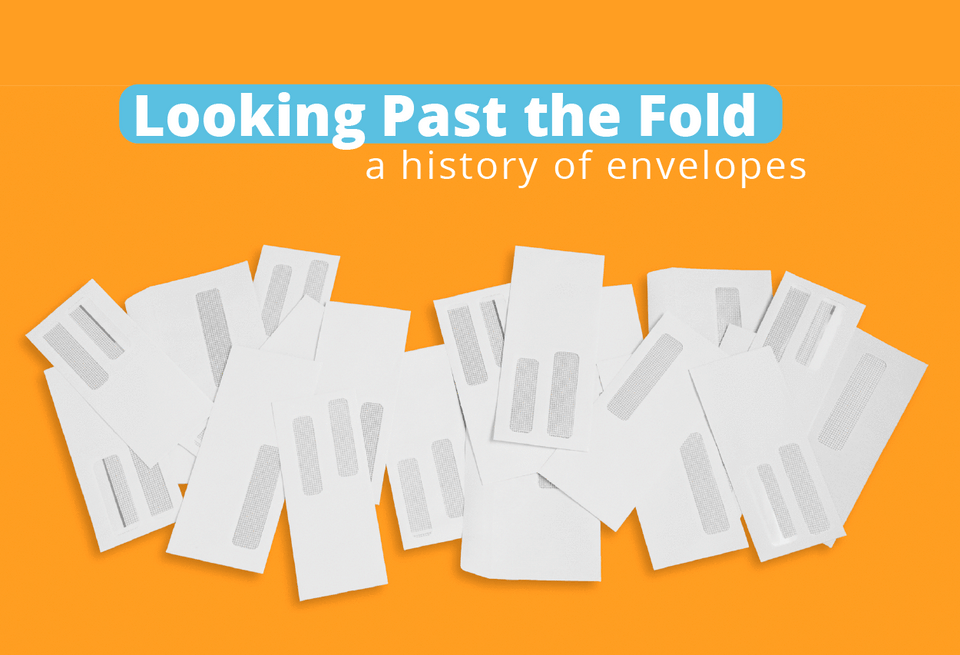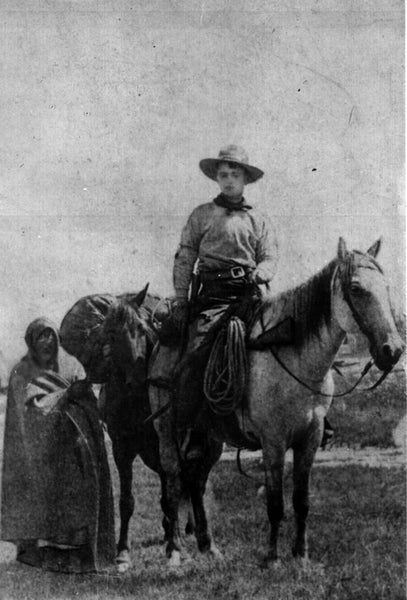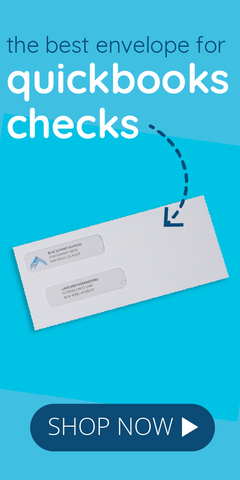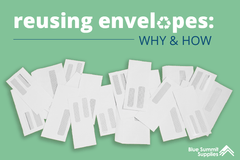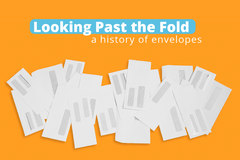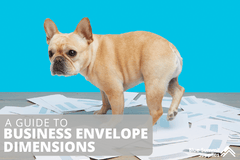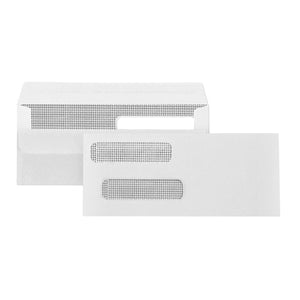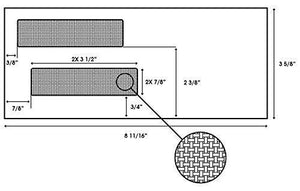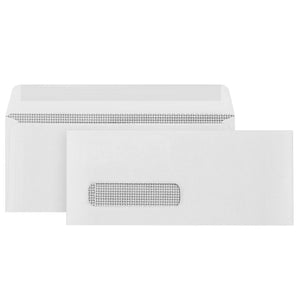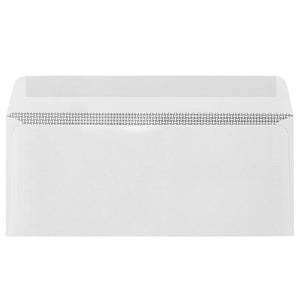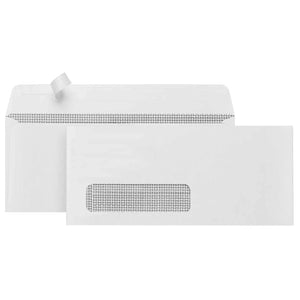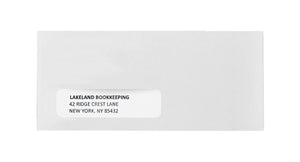Much of our life at Blue Summit Supplies revolves around envelopes. They’re our biggest seller, since they’re a consistent office supply staple every business needs. Thanks to this high volume of envelope sales, we’ve become pretty well-versed in the envelope world.
But to an envelope layman, the bevy of options can be overwhelming and oftentimes confusing. There are dozens of types of envelopes all connoted by names, letters, and numbers. There are differences between legal size envelopes and business envelope size. All this paper jargon can become a jumble when you begin searching for the perfect envelope ‘fit.’
What makes it more confusing is that different countries have different terms for different sizes – a ‘legal’ sheet of paper is 8½” x 14” in the US, whereas the closest equivalent in the UK is the ‘foolscap’ which measures 8” x 13”. There are lots of little idiosyncrasies like these when it comes to paper product standardization, with specifics touching everything from legal-sized paper to a7 envelope size.
To understand how envelopes evolved, let’s check out where they started.
History of Envelopes
We’ve had written correspondence for thousands of years, though it hasn’t always been the ‘paper wrapped up in other paper’ method we use today. Our very first envelopes were made from clay: hard, baked-clay shells ensconcing the stone tablet inside. The recipient had to shatter the clay to read their message, which is just the right level of melodrama for reading your correspondence.

Cuneiform Tablet and Envelope, c. 1927-1836 BCE [source]
But cracking open clay every time you received a bill would doubtlessly get old, fast. Older civilizations thought so, too. The introduction of paper changed the game, and the lucky literate began to write letters on paper. They would typically use the letters themselves as envelopes – this entailed folding the letter in halves or thirds and sealing it with an adhesive, before writing the address on the clean back of the letter.
Some historians believe it was French monarch Louis XIV who popularized the practice of using envelopes. The king, known for his love of excess, requested bespoke envelopes to keep his personal correspondence private. The trend caught on only among the very wealthy, since paper was still an expensive commodity.
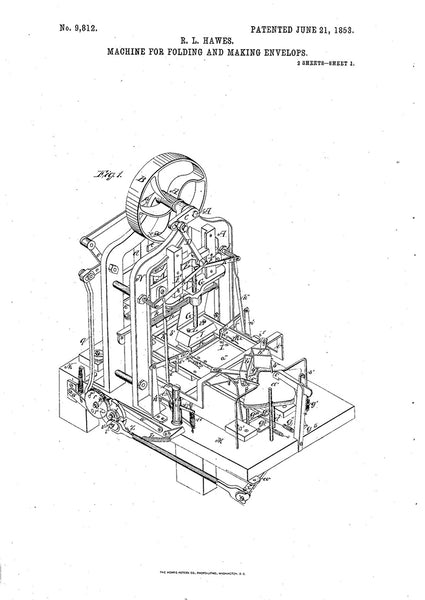
Envelope Making Machine Patent, 1853
It wasn’t until the mid-19th century that envelopes became more widely used, thanks to the invention of an envelope-making machine in England. Before this technology, all envelopes had been hand-folded, and the labor had driven costs higher still. Inspired by the English, American inventor R. L. Hawes created and patented his own envelope-making machine, which saw commercial success and greatly reduced the cost of envelopes.
As for self-adhesive envelopes history, Hawes’ invention led to his peers creating similar machines, until in the late 19th century a machine was created that could fold and apply adhesive to envelopes. It was a breakthrough that allowed the mass production of envelopes and the eventual birth of the pre-stamped envelope.
For the American development of mail and its envelopes, there were times when it was unexpectedly dicey. One of the most popular bits of postal trivia comes from a San Francisco paper in 1860, an ad put out for the Pony Express seeking postal workers: “Wanted: Young, skinny, wiry fellows not over 18. Must be expert riders. Willing to risk death daily. Orphans Preferred.”
This ad gives an idea of the danger of riding for the Pony Express, which was a faster postal service developed just before the Civil War. These riders would wrap the letters, already in envelopes, in oil silk to protect them from harsh conditions and the wear of long-distance saddlebag storage.
Pony Express Rider, 1861
It wasn’t long before a different sort of envelope crisis emerged – envelopes existed, but there were no longer enough of them. The Civil War brought with it a paper shortage, and letter-writers had to get crafty. They began turning their used envelopes inside-out, something known as a ‘turned cover,’ while others used patterned bits of wallpaper, pages from books, or other scraps of repurposed paper as handmade envelopes.
Today, we use all kinds of envelopes – patterned, blank, business, mass-produced – and in huge quantities. Every year, we produce over 450 billion envelopes. With the return of nostalgia and the love of things gone by, kits are even available for you to create your own envelopes.
So what do we do with all these envelopes? We mail them, of course! But as the post office has progressed, so have envelopes. Instead of a standard bi- or tri-fold by hand, or even a machine-folded envelope, our modern envelopes come with all manner of seals and in several shapes and sizes.
Types of Envelopes
Despite a shared history, all envelopes are no longer created equal. Envelopes have developed to cater to all sorts of needs: everything from business correspondence to joyful announcements. There are many different dimensions, some connoted in simple terms like 3x6 envelopes or 7x7 square envelopes, and others referred to by numbers like number 10 envelope size.
There are several common types of envelopes, each with a different designated purpose.
Announcement Envelopes
Announcement (or baronial) envelopes have the classic pointed flap closure. They’re used for greeting cards, announcements of any kind, invitations, and informal mailings. They’re sized from A-2 to A-10.
A-Style Envelopes
These envelopes have a square flap and come in a wide range of sizes. They’re commonly used for marketing efforts, promotional pieces, cards, brochures, and formal announcements.
Booklet and Catalog Envelopes
These larger envelopes are for mailing thick items like catalogs, brochures, multiple documents, manuals, or books. They can come with an adhesive seal or a pronged seal, or both.
Commercial Envelopes
The most common type of business envelope, commercial envelopes are used primarily for billing, confidential documents, and correspondence. They’re sized from #5 to #10. The flap can be shaped and sized differently depending on need.
So how do you know which envelope is right for you?
Consider your mailing needs and use the above chart as a loose reference.
For example, if you’re mailing sensitive documents like tax forms, consider investing in a high-quality (but affordable) security envelope that will keep sensitive information hidden in transit.
Or if you’re sending out announcements for a life event like a birth or engagement, consider a baronial envelope that will give it the traditional look.
If you have any questions about envelope sizing, drop a comment below or reach out to us on social media! To check out which envelopes we offer, visit us at BlueSummitSupplies.com.
 For more informative articles about office supplies, subscribe to our email newsletter!
For more informative articles about office supplies, subscribe to our email newsletter!
Never fear, you won't begin receiving daily sales emails that belong in a spam folder. Instead, we promise a fun weekly roundup of our latest blog posts and great finds from across the web. And if you lose interest, it's always easy to unsubscribe with a single click.

